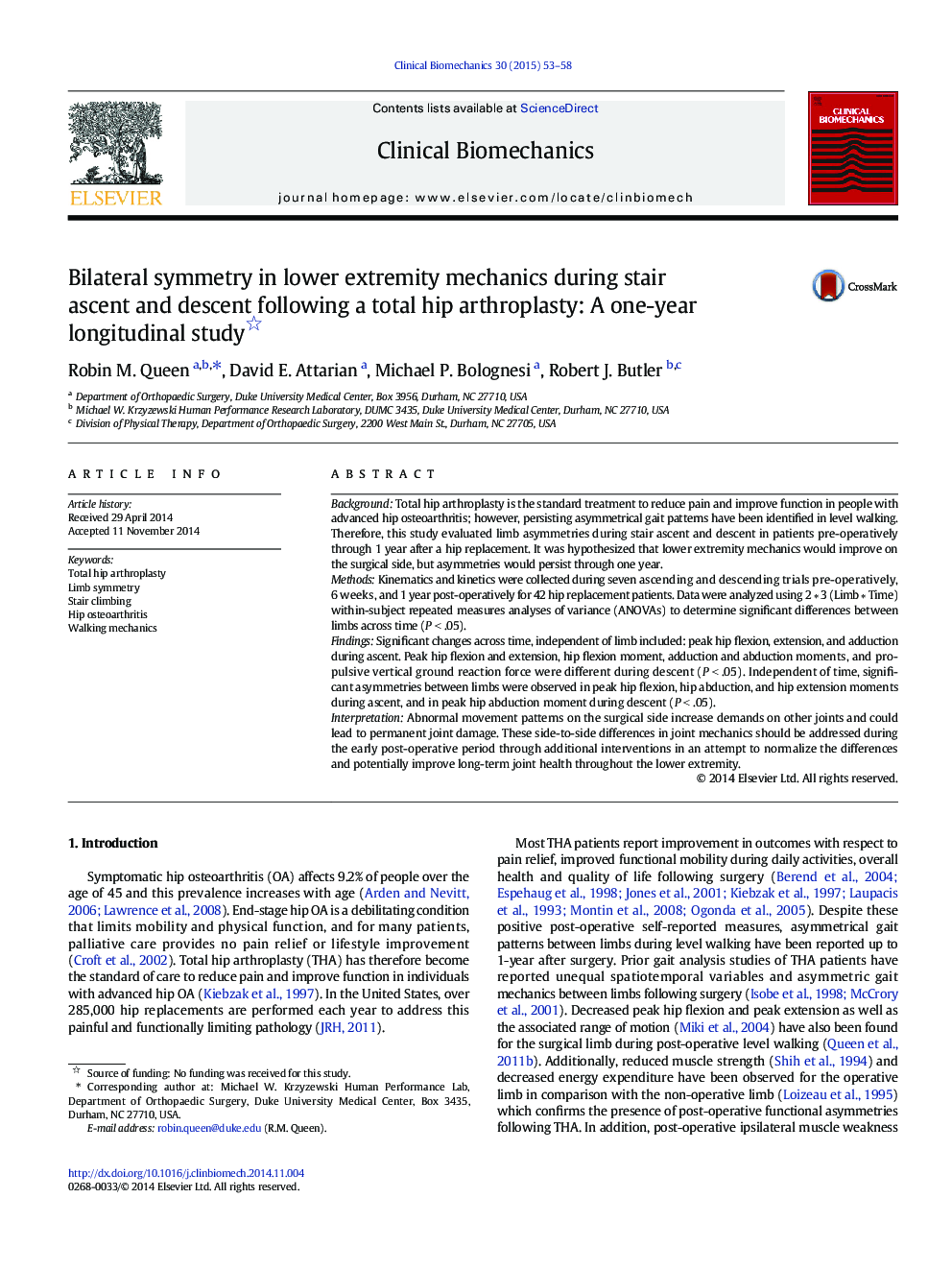| کد مقاله | کد نشریه | سال انتشار | مقاله انگلیسی | نسخه تمام متن |
|---|---|---|---|---|
| 4050261 | 1264915 | 2015 | 6 صفحه PDF | دانلود رایگان |
• We examined gait symmetry in total hip replacement patients during stair climbing.
• We contributed to understanding of hip replacement mechanics during demanding tasks.
• Gait mechanics show improvement following a total hip replacement.
• Side-to-side asymmetries remain up to 1 year following total hip replacement.
• Asymmetry should be addressed early through intervention to prevent implant failure.
BackgroundTotal hip arthroplasty is the standard treatment to reduce pain and improve function in people with advanced hip osteoarthritis; however, persisting asymmetrical gait patterns have been identified in level walking. Therefore, this study evaluated limb asymmetries during stair ascent and descent in patients pre-operatively through 1 year after a hip replacement. It was hypothesized that lower extremity mechanics would improve on the surgical side, but asymmetries would persist through one year.MethodsKinematics and kinetics were collected during seven ascending and descending trials pre-operatively, 6 weeks, and 1 year post-operatively for 42 hip replacement patients. Data were analyzed using 2 ∗ 3 (Limb ∗ Time) within-subject repeated measures analyses of variance (ANOVAs) to determine significant differences between limbs across time (P < .05).FindingsSignificant changes across time, independent of limb included: peak hip flexion, extension, and adduction during ascent. Peak hip flexion and extension, hip flexion moment, adduction and abduction moments, and propulsive vertical ground reaction force were different during descent (P < .05). Independent of time, significant asymmetries between limbs were observed in peak hip flexion, hip abduction, and hip extension moments during ascent, and in peak hip abduction moment during descent (P < .05).InterpretationAbnormal movement patterns on the surgical side increase demands on other joints and could lead to permanent joint damage. These side-to-side differences in joint mechanics should be addressed during the early post-operative period through additional interventions in an attempt to normalize the differences and potentially improve long-term joint health throughout the lower extremity.
Journal: Clinical Biomechanics - Volume 30, Issue 1, January 2015, Pages 53–58
